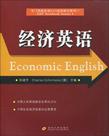专门用途英语规划教材
2009-9
苏州大学出版社
陈建平,(美)肖梅克 主编
211
本书旨在帮助读者学习经济领域中的专业英语,掌握一定的英文经济术语、商务词汇、法律词汇及文化词汇,熟悉和了解中西方经济文化差异,深刻领会经济英语在语义、语用、语篇等方面的特殊性及其变化规律,提高专业英语技能。通过对本书的学习,读者还可在专业英语的语境中较为系统地了解和把握微观经济学、经济地理、国际经济组织、经济一体化、PEST分析等方面的专业基础知识。本书共由13个单元组成,在编写上具有以下特点: 1.在结构编排上,呈现立体式趋势。各个单元学习前首先明确了重要概念和学习目标,课后配有参考文献、阅读书目、课文注释及课后专项练习,便于教师有效地组织课堂教学及学生自主学习。 2.在内容体系上,注重英语知识和专业知识的有机统一,使学生能在专业英语语境中较为系统地学习相关经济专业知识,强化专业英语技能。 3.课文注释注重背景知识介绍。各个单元较为详细地介绍了相关专业背景知识,并对专有名称、专业词汇、难词及难点进行中文解释,以帮助学生更好地理解课文内容,拓展知识面。 4.课后专项练习注重学习实效。每个单元按学习要求配有词句翻译、填空、正误判断、问题讨论等多项练习,便于学生复习和检验所学的语言知识和专业知识。 本书可作为高等院校英语专业、商务英语专业及经济、管理类专业的经济英语或商务英语教材,也可作为经济类专业的补充教材或教学参考用书,此外,还可用作涉外经济部门的专业英语培训教材或自学参考书。
Unit 1 The Great DepressionUnit 2 EconomicsUnit 3 Economic GeographyUnit 4 SloballzationUnit 5 World Trade OrganizationUnit 6 Regional Economic IntegrationUnit 7 PEST AnalysisUnit 8 "P" (Political) of PESTUnit 9 "E" (Economics) of PESTUnit 10 "S" (SoclaI-Culturel] of PESTUnit 11 "T" (Technology) of PESTUnit 12 Entering Foreign MarketsUnit 13 Culture in International BusinessApendix Ⅰ An Overvlew of World Logal SystemsAppendix Ⅱ An Overview of Laws of Untied States and China
Fourth causerevolves around trade declineand theUnitedStatesSmoot-Hawley Tariff Act13. Many economists argue that the sharp decline ininternational trade after 1930 helped to worsen the depression.This wasespecially true for countries which were dependent on foreign trade. Most economists assign the 1930 American Smoot-Hawley Tariff Act part ofthe blame for worsening the depression by seriously reducing international tradeand causing retaliatory regulations in other countries. The average ad valorem14rate of duties on dutiable imports for 1921-1925 was 25.9% but under theSmoot-Hawley tariff it jumped to 50% in 1931-1935. Purchases in USA In the 1920s, in the United States household there was widespread use ofcredit to purchase businesses and factories and the use of home mortgagesIs andcredit purchases of automobiles, furniture and even some stocks, boostingspending. But this created consumer and commercial debt. People and firms thatwere deeply in debt when a price deflation occurred or demand for their productdecreased faced serious trouble——they risked default. Many people drastically cutcurrent spending to keep up time payments, thus lowering demand for newproducts. Firms began to fail as construction work and factory orders plunged.Massive layoffs occurred, resulting in unemployment rates of over 25%. Bankswhich had financed the debt began to fail as debtors defaulted on debt and bankdepositors became worried about their money and began massive withdrawals. At its nadir, the Depression was a "Catch Twenty-Two" 16: Workers wereidle because firms would not hire them to work; firms would not hire workers towork because they saw no market for goods; and there was no market for goodsbecause workers had no work——no incomes to spend. After the panic of 1929, and during the first 10 months of 1930, 744United States banks failed. In all, 9,000 United States banks failed during thedecade of the 1930s. By 1933, depositors saw $140 billion of their depositsdisappear due to uninsured bank failures. As bank failures snowballed desperatebankers tried calling in loans which the borrowers did not have time or money torepay. With future profits looking poor, capital investment and constructionslowed or completely ceased.
中国大学英语教学改革的方向;中国社会经济发展的必然要求。
